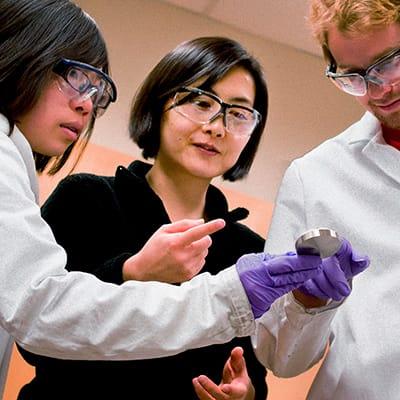2.625J: Electrochemical Energy Conversion and Storage: Fundamentals Materials and Applications
Class Information
Fall | Graduate | 12 Units | Prereq: 2.005, 3.046, 3.53, 10.40, (2.051 and 2.06), or permission of instructor
Fundamental concepts, tools, and applications in electrochemical science and engineering. Introduces thermodynamics, kinetics and transport of electrochemical reactions. Describes how materials structure and properties affect electrochemical behavior of particular applications, for instance in lithium rechargeable batteries, electrochemical capacitors, fuel cells, photo electrochemical cells, and electrolytic cells. Discusses state-of-the-art electrochemical energy technologies for portable electronic devices, hybrid and plug-in vehicles, electrical vehicles. Theoretical and experimental exploration of electrochemical measurement techniques in cell testing, and in bulk and interfacial transport measurements (electronic and ionic resistivity and charge transfer cross the electrode-electrolyte interface).
